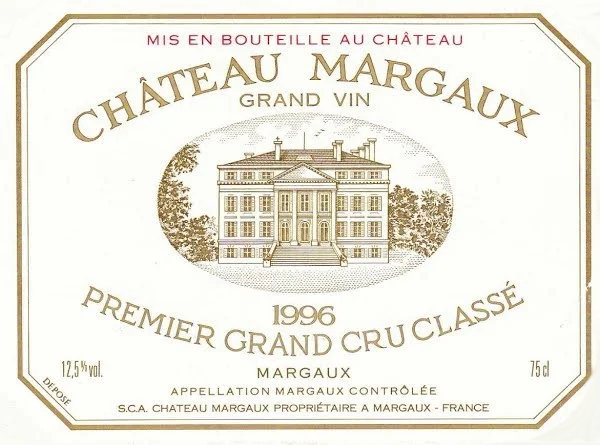Château Margaux 2009
Review of the Estate
Château Margaux is known for producing some of the silkiest, most aromatic wines in Bordeaux and it has been famous for doing so for centuries. The origins of the estate may be traced back to the 15th century when the Lestonnac family took over a grain growing property known as Lamothe (deriving from la motte - meaning a small rise in the land, or hill). The agricultural change from cereal crops to vines was led by Pierre de Lestonnac from 1572 to 1582. Further developments occurred when, over a century later, Chateau Margaux estate manager, Monsieur Berlon, saw the benefits of vinifying red and white grapes separately. This change was what set Chateau Margaux firmly on the path to modern vinification practices and international renown.
This reputation spread over the next several hundred years. Sir Robert Walpole, the English Prime Minister in the early 18th Century, declared himself an avid supporter of Chateau Margaux and was known to purchase four casks every three months! When the Marquis de la Colonilla purchased the estate in the early 19th century, the outstanding reputation of Chateua Margaux's wines demanded an impressive chateau to match. Built in 1810 by Louis Combes, the current chateau is a unique example of the neo-classical style. With its structured facade, balanced by ionic columns, it exudes a refined elegance not dissimilar to that of the wines produced within. Chateau Margaux was officially recognised as an historic monument in 1946.
Today Chateau Margaux is owned by Corinne Mentzelopoulos. Her father, Andrè, purchased the estate in 1977 and invested significantly in the regeneration of the vineyard and winery by installing new drainage systems, replanting vines, creating a new underground cellar and investing in new oak barrels. The result of these improvements is evident in the spectacular and consistent vintages produced by Chateau Margaux since the 1978 vintage. This has allowed Chateau Margaux to remain a dominant force in a highly competitive market and maintain its preeminent global reputation.

Vineyard
Surface area: 192.7 acres
Grape Varieties: 75% Cabernet Sauvignon, 20% Merlot, 5% Cabernet Franc and Petit Verdot
Average age of vines: 35 years
Density of plantation: 10,00 vines per hectare
Average yields: 45 hectoliters per hectare
Average cases produced: 16,500 per year
Plateau of maturity: 9 - 35 years
Château Margaux 2009 Reviews / Tasting Notes
Lisa Perrotti-Brown - The Wine Advocate
Point Score: 98
The 2009 Chateau Margaux is deep garnet in color and features wonderfully fragrant minted cassis, lilacs, Black Forest cake and oolong tea scents with touches of pencil shavings and dusty soil. Medium to full-bodied, it has a firm, grainy frame with lovely freshness lifting the perfumed fruit to a very long, mineral-laced finish.
Wine Spectator
Point Score: 97
This offers gorgeously caressing fruit, with steeped plum, blackberry and red currant notes, finely embroidered with accents of rooibos and black tea, tobacco leaf, alder and sandalwood. Delivers loads of fruit, with the structure already melded into the core of fruit-but that's the vintage style. A stunner, though I still find the '10 a full step ahead.-Non-blind Chateau Margaux vertical (December 2013). Best from 2018 through 2035.
James Suckling
Point Score: 100
The nose is out of this world, with lilacs, currants, blackberries, and blueberries. Full-bodied, with super silky tannins and savory fruit and amazing flavors of fine leather, blueberries, and sandalwood. The quality of the tannins are amazing, with creamy texture and bright acidity on the end. Such classic and classicism. Delicacy. Lasts for minutes on the palate. This is 13.2% alcohol. Best Margaux in bottle yet... will 2010 be as great? Try it in 2020.